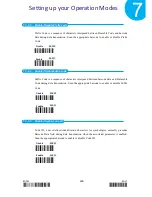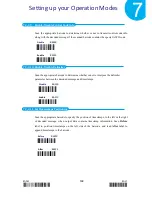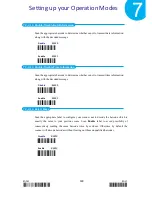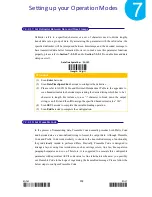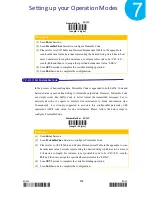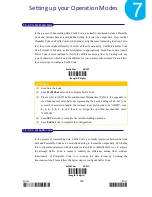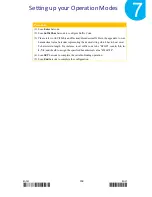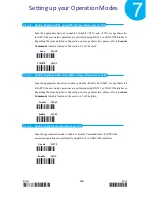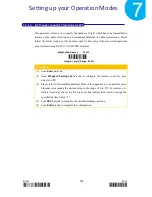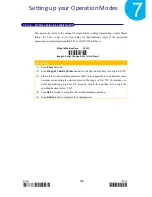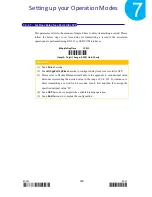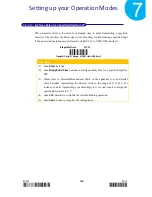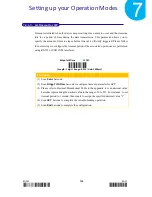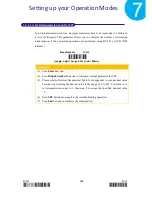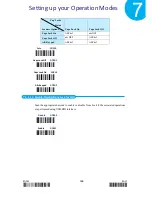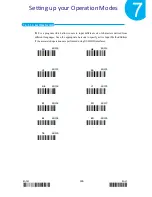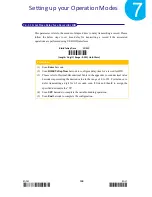
Enter 153 End
*/$%ENTR* *ZEND*
Setting up your Operation Modes
7
7-3-2-20.
Set Prefix Code
In the process of transmitting data, Prefix Code is normally interposed between Preamble
Code and barcode data as a user-defined string to format the output data. It seems that
Preamble Code and Prefix Code both provide exactly the same formatting function, but in
fact they work slight differently in terms of their functionality. Unlike Preamble Code
which intends to function as line terminators to appropriately break line in data transit,
Prefix Code is more inclined to clarify the difference among lines by binding with any
type of characters which is only identifiable for you to achieve the attempt. Please follow
the below steps to configure Prefix Code.
Procedure
(1)
Scan Enter barcode.
(2)
Scan
PrefixChar
barcode to configure Prefix Code.
(3)
Please refer to ASCII Table and Decimal/Hexadecimal Table in the appendix to
scan hexadecimal value barcodes representing the desired string which has to be
at most 8 characters in length. For instance, to set prefix code to be “ABCD”, scan
4, 1, 4, 2, 4, 3, 4,
and then
4
to assign the specified hexadecimal value
"41424344".
(4)
Scan
SET
barcode to complete the variable-binding operation.
(5)
Scan
End
barcode to complete the configuration.
7-3-2-21.
Set Suffix Code
In the process of transmitting data, Suffix Code is normally interposed between barcode
data and Postamble Code as a user-defined string to format the output data. By binding
this configurable parameter with parameter value which is identifiable for you to achieve
the attempt, Suffix Code is meant to identify the difference among lines, whereas
functionality of Postamble Code is to arrange the data format by breaking the
transmission line. Please follow the below steps to configure Suffix Code.
*BB0E5*
PrefixChar
BB0E5
*BB8E5*
SuffixChar
BB8E5
(Length: 8 digits)
(Length: 8 digits)








